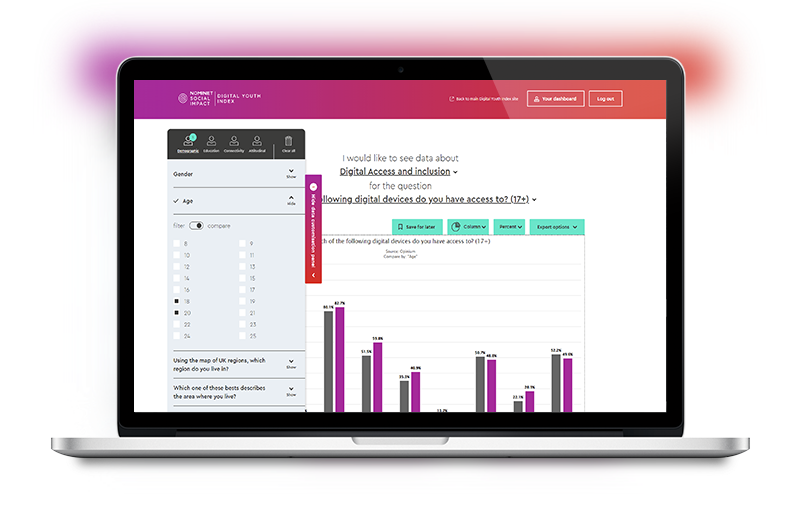When considering digital safety, our index evaluates the awareness, understanding and abilities of young people to stay safe online. It encompasses elements of online security, such as through strong passwords and privacy settings, alongside how safe young people feel online and their exposure to harmful content.
We’re going to explore the key findings of our 2022 research for digital safety, including the young people most impacted in this pillar and some of the online dangers they face.
Key Findings
94% of young people surveyed for the Digital Youth Index said they felt safe online, with many feeling reassured that their peers felt safe using online platforms and services.
Interestingly, the overall digital safety index score is the same for both boys/young men and girls/young women (both 79%), despite girls/young women being more likely to experience distressing content online.
Girls/young women are twice as likely to be asked to share inappropriate or sexual images online (22% vs. 12% for boys/young men).
The digital safety index also improves with age, from 65% among 8-10-year-olds to 84% among 23-25 years olds. This reinforces the expectation that safety improves with experience and learning, and also the need for a greater emphasis on raising awareness and understanding of digital safety and security in younger children (junior to early secondary school ages).
Financial situation and location also doesn’t significantly impact digital safety, with no difference in the index scores by factors like social grade and household income. There’s also only a minor difference between the digital safety scores of young people living in urban, suburban and rural areas, however those living in urban areas are slightly more likely to be exposed to distressing content online such as hate speech (30% urban vs. 27% rural).
Young people living in urban areas are more likely than those living in rural areas to experience bullying from people they know (21% vs. 17%).
Issues and dangers experienced by young people online
While young people surveyed for the 2022 index often spoke of enjoying time online, they also mentioned being worried about the dangers of being online, particularly of talking to strangers or people pretending to be others.
Our index data also shows that young people are vulnerable to several dangers online, with some groups experiencing harmful content such as hate speech and trolling more than others.
For example, young people in the LGBTQ+ community are twice as likely to experience hate speech online (52% vs. 26% for straight/heterosexual respondents). Young people from an ethnic minority background and those with a disability are also more likely to experience hate speech online, while 48% of young people struggling with their mental health have experienced hate speech.
A young person from an ethnic minority background is more likely to see content from radical/extremist groups (13% vs. 8% for white respondents).
Young people in the LGBTQ+ community are also twice as likely to experience trolling or abuse from strangers. Similarly, those from an ethnic minority background are more likely to experience bullying from people they don’t know. The same story applies to young people with a disability (33% vs. 18% for young people without a disability).
38% of young people with mental health struggles have experienced trolling or abuse online.
Seeing distressing content related to self-harm or suicide is a worrying issue among young people, especially those in the LGBTQ+ community who are more than twice as likely to be exposed to sexual content and to see content that promotes self-harm or suicide. Young people with a disability are also more likely to see content that promotes self-harm or suicide (26% vs. 12% for those without a disability) and a third of young people struggling with their mental health see this type of content online.
While all young people need better support and education on digital safety, those within the LGBTQ+ population are at high-risk and most likely to need support to cope with the challenges they face online, this is estimated to be between 1.2 million to 1.9 million young people1. Exposure to distressing content is also particularly acute among young people who are struggling with their mental health, who should also be high priority when it comes to support.
You can explore the data around digital safety, and all the pillars of the Digital Youth Index, using our data tool.
Share this article







